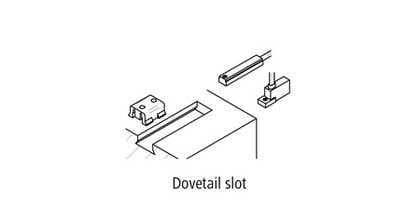Installation of sensors
Maximum installation torque
Observe the specified maximum installation torque to prevent the sensor from damage during installation.
Cylindrical design with male (external) thread
The values applicable to the sensing head are reduced by approx. 30%.

Rectangular design with female (internal) thread
- M2 = 0,1 Nm
- M2,5 = 0,1 Nm
- M3 = 0,3 Nm
The mounting of magnetic sensors
Shielded (flush) installation
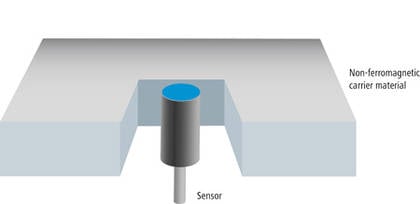
Magnetoresistive proximity switches are conceived for shielded (flush) installation, meaning the sensing face being plain to the carrier surface. The carrier material must be non-ferromagnetic. Shielded installation in a ferromagnetic material will reduce the sensing distance by up to 25%, unshielded or non-flush installation (sensing face protruding by its diameter from the ferromagnetic carrier surface) will enhance the sensing distance by up to 25%.
Permanent magnet - Alloy
The switching distance of a magnetic sensor relates to the magnet deployed. Not only size but also alloy of the permanent magnet play a decisive role. The higher the energy product of the magnetic alloy in kJm³, the stronger the magnetic field and hence the more extended the switching distance.
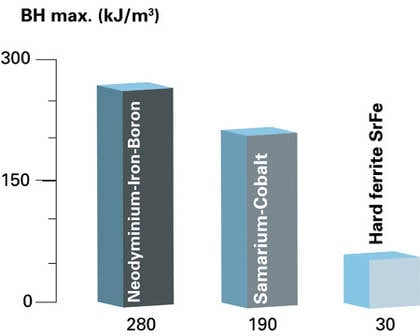
Permanent magnet - Alignment
By principle, magnetoresistive proximity switches are polarity neutral, i.e. the sensor will detect both north and southpole of the permanent magnet. It is recommended to always attach the permanent magnet with one pole in alignment to the sensor to ensure reliable detection.
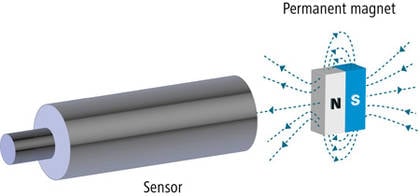
Permanent magnet - Mounting
The way a permanent magnet is mounted plays a crucial role in the sensing distance. When attached to a non-ferromagnetic carrier, the influence on the assured sensing distance will be nearly not noticeable. However, a permanent magnet mounted unshielded on a ferromagnetic carrier will enhance the switching distance by up to 25%. Attached flush or shielded to a ferromagnetic carrier, the switching distance will be reduced by up to 40% (always related to the assured sensing distance). If the permanent magnet is to be screwed on, always use non-ferromagnetic screws (e.g. stainless steel).
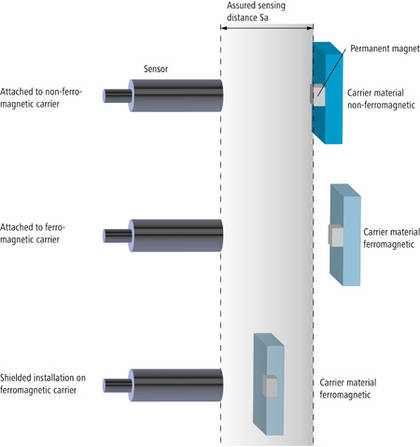
Mounting of magnetic cylinder sensors
Adjustment
The magnetic fields of the permanent magnets inside the cylinders scatter and will differ in their specifications according to the cylinder type. Thus, it is not possible to specifiy the exact tripping point of the sensor. To ensure the cylinder sensor is placed in the proper position proceed as follows:
Mounting - Cylinders with slot
Conventional cylinders provide standard T- or C-slots. The cylinder sensors are simply introduced in the slot and secured – either by using a grub screw or by a metal plate which will lock in the slot after having tightened the fastening screw.

Mounting - Round cylinders or cylinders with tension rods
Some commonly deployed round cylinders or cylinders with tension rods may not provide a slot for sensor mount. In this case, the C- or T-slot sensors will be attached using clamps or bolts.
Mounting - Special slots
C-slot sensors can also be mounted in T-slots by using the adaptor from an accessory kit. Adaptors for special slots such as dovetail are also available.






